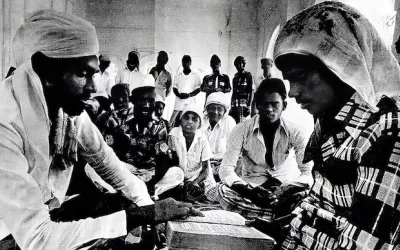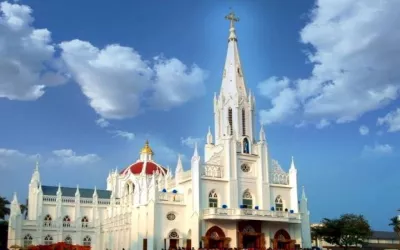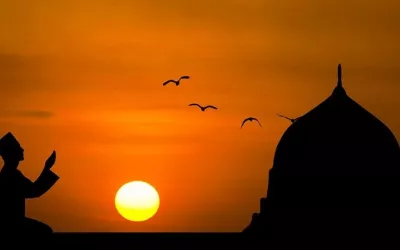India, with its vast historical and cultural tapestry, has seen the rise and fall of empires, many of whom left their mark on the religious landscape of the subcontinent. Among the most iconic symbols of Hindu devotion are the temples dedicated to Lord Ganesha, the remover of obstacles and the harbinger of prosperity. Unfortunately, many of these temples fell victim to foreign invaders, particularly during the medieval and early modern periods. These invaders, driven by political, religious, or military motives, often targeted Hindu temples to assert dominance over the local population. However, the resilience of the Hindu community ensured that many of these temples were restored, either by local rulers or by subsequent generations.
This article explores the history of several prominent Ganesha temples that were demolished by foreign invaders and later restored or relocated. It serves as a reminder of the turbulent times India witnessed and the enduring spirit of its people.
1. Madhur Mahaganapathi Temple, Kasargod, Kerala
The Madhur Mahaganapathi Temple, located in the northern part of Kerala, holds a special place in the hearts of the devotees of Lord Ganesha. This temple's significance stretches back several centuries, but it faced a major calamity in 1788 AD when it was attacked by Tipu Sultan, the ruler of the Kingdom of Mysore. Tipu Sultan, known for his campaigns in the Malabar region, sought to expand his empire and assert control over the local populace. The Madhur Mahaganapathi Temple became one of his targets during these raids. Despite the destruction, the temple has been rebuilt over time and continues to be an important site of worship. Today, it stands as a testament to the resilience of the local community and their dedication to preserving their religious heritage.
2. Trinetra Ganesh Temple, Ranthambore, Rajasthan
The Trinetra Ganesh Temple, located within the famous Ranthambore Fort, is one of the oldest temples dedicated to Lord Ganesha in India. This temple, built in the 12th century, became a significant pilgrimage site for devotees across Rajasthan and beyond. However, its fate took a turn when Alauddin Khilji, the Sultan of Delhi, attacked Ranthambore in 1301 AD. His campaign against the Hindu kingdoms led to the destruction of the temple, which was seen as a symbol of resistance. The temple was later restored by Raja Hameer, the local ruler, who played a significant role in defending the fort from Khilji's forces. The restoration of the Trinetra Ganesh Temple marked the resilience of the Hindu rulers against foreign invasions.
3. Mahaganpati Temple, Navelim, Goa
Goa, known for its beautiful beaches and Portuguese influence, was also home to several ancient Hindu temples. One of the most significant was the Mahaganpati Temple in Navelim. This temple, however, came under attack by Mahmud Gawan of the Bahmani Sultanate. The Bahmani rulers, who were based in the Deccan region, often targeted temples during their military campaigns. To protect the deity and continue worship, the idol was shifted multiple times — from Khandepar to Divar, Bicholim, and finally to its current location in Khandola, Ponda, Goa. This continuous relocation is a testimony to the determination of the devotees to protect their religious identity despite foreign invasions.
4. Sri Ganesh at Hoysaleshwar Temple, Halebidu, Karnataka
The Hoysaleshwar Temple in Halebidu, Karnataka, dedicated to Lord Shiva, is also home to a beautiful idol of Lord Ganesha. This temple, a masterpiece of Hoysala architecture, faced destruction in 1121 AD when Malik Kafur, a general of the Delhi Sultanate, invaded the region. Malik Kafur's raids were part of the larger strategy of the Delhi Sultanate to expand its influence in southern India. The destruction of the temple marked the decline of the Hoysala dynasty, but the temple complex, including the idol of Lord Ganesha, has since been restored and continues to be a site of architectural and religious significance.
5. Khajrana Ganesh Temple, Indore, Madhya Pradesh
The Khajrana Ganesh Temple in Indore is one of the most revered temples in Madhya Pradesh today, attracting thousands of devotees. However, this temple, too, faced the wrath of Mughal Emperor Aurangzeb, who was known for his campaigns against Hindu temples. In 1669 AD, Aurangzeb ordered the destruction of the Khajrana Ganesh Temple as part of his policy of religious intolerance. Despite this setback, the temple was restored in 1736 AD by Devi Ahilyabai Holkar, the famous Maratha queen of Malwa. Devi Ahilyabai is remembered for her efforts in rebuilding temples across India, and her contribution to the Khajrana Ganesh Temple remains a lasting legacy.
6. Mahaganpati and Mahamaya Temple, Ella, Goa
The Mahaganpati and Mahamaya Temple in Ella, Goa, faced destruction not from a Muslim ruler but from Constantino of Braganza, a Portuguese nobleman, in 1560 AD. The Portuguese, upon establishing their rule in Goa, sought to Christianize the region and often targeted Hindu temples as part of their efforts to suppress local religious practices. To preserve the deity, the idols were shifted to Shirali, Bhatkal, Karnataka, where they continue to be worshipped to this day. The Portuguese destruction of temples in Goa is a lesser-known chapter of Indian history, but it reflects the broader pattern of religious intolerance that marked much of India's colonial past.
7. Parvati Ganesh Temple, Hampi, Karnataka
Hampi, once the capital of the mighty Vijayanagara Empire, was home to many grand temples, including the Parvati Ganesh Temple. However, in 1565 AD, the combined forces of the Deccan Sultanates — Adilshah, Nizamshah, Beridshah, Kutubshah, and Imadshah — attacked and sacked the city of Hampi, marking the end of the Vijayanagara Empire. The Parvati Ganesh Temple, like many others, was destroyed during this invasion. Hampi's ruins still stand as a reminder of the cultural and architectural achievements of the Vijayanagara Empire, as well as the destruction wrought by foreign invasions.
8. Ganpatyar Temple, Srinagar, Jammu & Kashmir
The Ganpatyar Temple in Srinagar, dedicated to Lord Ganesha, faced destruction at the hands of Ahmad Shah Durrani, the founder of the Durrani Empire, in 1765 AD. Ahmad Shah's invasion of India saw the looting and destruction of many Hindu temples, including the Ganpatyar Temple. The temple was later restored by Maharaja Gulab Singh in 1854 AD, who sought to revive Hindu religious practices in the region. Today, the Ganpatyar Temple remains a significant religious site for Kashmiri Hindus.
9. Dhundiraj Ganesh Temple, Varanasi, Uttar Pradesh
The Dhundiraj Ganesh Temple in Varanasi, one of the holiest cities in India, faced destruction under the orders of Mughal Emperor Aurangzeb in 1669 AD. Aurangzeb's policies of temple destruction were part of his larger agenda to establish Islamic supremacy in the subcontinent. However, the temple was later reconstructed by Peshwa Bajirao I, the Maratha ruler, who played a significant role in restoring Hindu temples across North India.
Such as Trinetra Ganesh Temple Ranthambore- destroyed by Ala udann khilji and Restored by Raja Hameer, Sri Ganesh at Hoysaleshwar temple Halebidu Karanataka- destroyed by Malik Kafor in 1121 AD and Khajrana Ganesh Temple Indore Madhya Pradesh, destroyed by Aurangzeb, restored by Devi Ahilyabai Holkar in 1736 AD. Paravati Ganesh Temple Hampi Karanataka- destroyed by Adilshah, Nizamshah, Beridshah, Kutubshah, Imadsgah in 1565 AD. These examples highlight the tumultuous history of India's temples, which faced destruction from both Islamic and European invaders. Despite these challenges, the restoration and continued worship at these sites reflect the resilience of Indian culture and the enduring significance of religious traditions in the face of adversity.






Comments
Add new comment